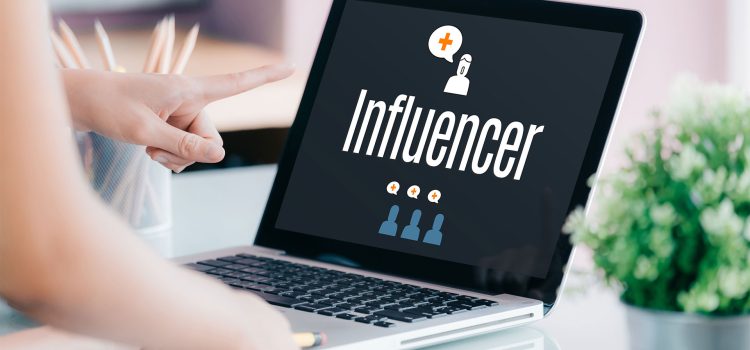
Introduction
In recent years, the media landscape has undergone a seismic shift, powered by the rise of influencer-driven content. This transformation has not only redefined how content is created and consumed but has also disrupted traditional media paradigms. Influencer-driven content in media is a phenomenon where individuals with significant social media followings create, curate, and disseminate content that resonates with their audience. This article delves into the intricacies of this trend, exploring its origins, evolution, impact, and future prospects.
Origins of Influencer-Driven Content

1. Early Beginnings
The concept of influencer-driven content is not entirely new. In the early days of marketing, celebrities and public figures often endorsed products and services, leveraging their fame to influence consumer behavior. However, the digital age has democratized influence, allowing ordinary individuals to amass large followings and become influential content creators.
2. The Role of Social Media Platforms
The advent of social media platforms such as Facebook, Instagram, YouTube, and TikTok has been instrumental in the rise of influencer-driven content. These platforms provide a space for individuals to share their lives, opinions, and expertise, attracting followers who trust their recommendations and viewpoints.
Evolution of Influencer-Driven Content

1. From Bloggers to Vloggers
The evolution of influencer-driven content can be traced back to the blogging boom of the early 2000s. Bloggers who wrote about niche topics such as fashion, travel, and food gradually amassed dedicated readerships. With the rise of video content, many bloggers transitioned to vlogging, using platforms like YouTube to reach a wider audience.
2. The Instagram Effect
Instagram’s visual-centric platform has played a pivotal role in the rise of influencer-driven content. Influencers use Instagram to share aesthetically pleasing photos and videos, often collaborating with brands to promote products. The introduction of features like Instagram Stories and IGTV has further expanded the possibilities for content creation.
3. The TikTok Revolution
TikTok’s rapid rise to popularity has introduced a new dimension to influencer-driven content. The platform’s algorithm-driven feed and short-form video format have enabled influencers to go viral quickly, reaching millions of users with creative and engaging content.
Impact on Traditional Media

1. Disruption of Advertising Models
Influencer-driven content has significantly disrupted traditional advertising models. Brands are increasingly shifting their marketing budgets from traditional media outlets to influencer collaborations, recognizing the power of influencers to drive engagement and sales. This shift has forced traditional media companies to adapt and innovate.
2. Changes in Content Consumption
The rise of influencer-driven content has changed how audiences consume media. Instead of relying solely on traditional media sources, consumers now turn to influencers for recommendations, entertainment, and information. This shift has led to the decline of traditional media consumption and the rise of on-demand, personalized content.
3. Democratization of Content Creation
Influencer-driven content has democratized content creation, allowing individuals from diverse backgrounds to share their voices and perspectives. This democratization has led to a more diverse and inclusive media landscape, challenging the dominance of traditional media gatekeepers.
The Business of Influencer-Driven Content

1. Monetization Strategies
Influencers employ various monetization strategies to generate income from their content. These include brand partnerships, sponsored posts, affiliate marketing, merchandise sales, and ad revenue from platforms like YouTube. The ability to monetize content has made influencing a viable career for many.
2. The Role of Influencer Agencies
The rise of influencer-driven content has given birth to a new industry: influencer agencies. These agencies connect brands with influencers, manage influencer campaigns, and provide analytics to measure the success of collaborations. Influencer agencies play a crucial role in professionalizing the influencer marketing industry.
3. Challenges and Ethical Considerations
Despite its success, influencer-driven content faces several challenges and ethical considerations. Issues such as fake followers, lack of transparency in sponsored content, and the mental health impact of social media fame are significant concerns. Both influencers and brands must navigate these challenges to maintain trust and authenticity.
Future Prospects

1. Technological Advancements
Technological advancements such as artificial intelligence, augmented reality, and virtual reality are poised to shape the future of influencer-driven content. These technologies will enable more immersive and interactive content experiences, further blurring the lines between influencers and traditional media.
2. Regulatory Developments
As influencer-driven content continues to grow, regulatory bodies are paying closer attention to the industry. Regulations around disclosure of sponsored content, data privacy, and advertising standards are likely to evolve, impacting how influencers and brands operate.
3. The Continued Rise of Micro-Influencers
While mega-influencers with millions of followers often dominate headlines, micro-influencers with smaller, highly engaged audiences are becoming increasingly valuable to brands. The authenticity and niche expertise of micro-influencers make them effective in driving targeted engagement and conversions.
Conclusion
The rise of influencer-driven content in media represents a paradigm shift in how content is created, consumed, and monetized. Influencers have become powerful media entities, challenging traditional media’s dominance and reshaping the industry. As technology continues to evolve and regulatory frameworks develop, the influencer-driven content landscape will undoubtedly continue to transform, offering new opportunities and challenges for content creators, brands, and consumers alike.










